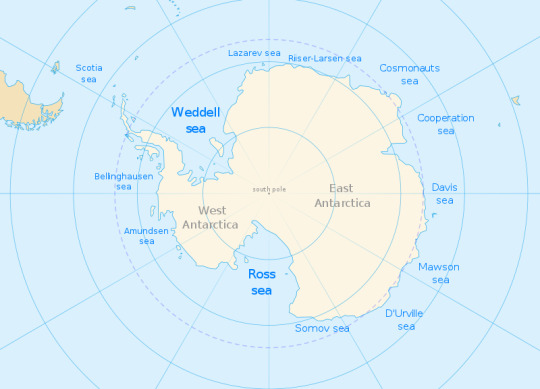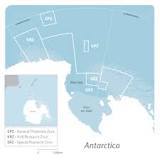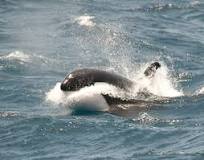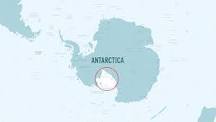#WhatishappeningintheRossSea?
Explore tagged Tumblr posts
Text
About Ross Sea, facts and maps

The Ross Sea is a deep bay of the Southern Ocean in Antarctica, between Victoria Land and Marie Byrd Land and within the Ross Embayment, and is the southernmost sea on Earth. It derives its name from the British explorer James Clark Ross who visited this area in 1841. To the west of the sea lies Ross Island and Victoria Land, to the east Roosevelt Island and Edward VII Peninsula in Marie Byrd Land, while the southernmost part is covered by the Ross Ice Shelf, and is about 200 miles (320 km) from the South Pole. Its boundaries and area have been defined by the New Zealand National Institute of Water and Atmospheric Research as having an area of 637,000 square kilometres (246,000 sq mi). The circulation of the Ross Sea is dominated by a wind-driven ocean gyre and the flow is strongly influenced by three submarine ridges that run from southwest to northeast. The circumpolar deep water current is a relatively warm, salty and nutrient-rich water mass that flows onto the continental shelf at certain locations. The Ross Sea is covered with ice for most of the year.

What is special about the Ross Sea?

It contains rare and vulnerable benthic species such as unique sponges that live for up to 500 years, breeding grounds and habitats for Antarctic toothfish, and other areas of importance for ecosystem integrity. What lives in the Ross Sea?

The Ross Sea is abundant with whales and seals. Killer Whales, Humpback Whales, Minke Whales, Leopard Seals, Crabeater Seals and Ross Seals can be expected during our Ross Sea voyages. What is happening in the Ross Sea? In a climate change related phenomenon, these winds are increasing in speed and frequency. Thus, the Ross Sea is producing more sea ice than ever before, at least for the time being. Surrounded on all sides by hundreds of kilometers of floating ice, pockets of open water teem with life. Why is the Ross Sea called the last ocean? South of New Zealand and deep in the Southern (or Antarctic) Ocean, the 1.9 million square-mile Ross Sea is sometimes called the "Last Ocean" because it is largely untouched by humans. Why does the Ross Sea not freeze? The Ross Ice Shelf is considered more stable, at present, than many of West Antarctica's other floating shelves—and this observation could help explain that: if a few inches of sea water periodically freezes onto the bottom of its ice, this could buffer it from thinning more rapidly. Is the Ross Sea cold? The waters of the Ross Sea are a chilling -1.5°C and yet the depths remain unfrozen because the ocean's salty water lowers the freezing point. Most organisms would freeze to death in waters so cold, yet the Ross Sea is filled with life. How deep is the Ross Sea?

The Ross Sea is relatively shallow, and it accounts for up an area that is approximately 960,000 square km (370,000 square miles). In many areas, the Ross Sea does not extend down more than 300 meters (985 feet) to the sea floor, but the southwestern section reaches a depth of 914 meters (3,000 feet). Who owns the Ross Sea? At least ten mammal species, six bird species and 95 fish species are found here, as well as many invertebrates, and the sea remains relatively unaffected by human activities. New Zealand has claimed that the sea comes under its jurisdiction as part of the Ross Dependency. Read the full article
#CanyouswimintheRossRiver?#CanyouswimintheRossSea?#DoestheRossSeagettsunamis?#HowbigistheRossSea?#HowdeepistheRossSea?#IsitRossSea?#IstheRossSeacold?#IstheRossSeawarm?#IsthereunclaimedlandinAntarctica?#WhatishappeningintheRossSea?#WhatisspecialaboutRossSea?#WhatisspecialabouttheRossSea?#Whatisthelargestmarinereserveintheworld?#WhatistheRossSeacalled?#WhatlivesintheRossSea?#whereisRossSea?#WherewastheRossSea?#WhichcountryownsRossIsland?#WhonamedtheRossSea?#WhoownsAntarctica?#WhoownstheRossSea?#WhydoestheRossSeanotfreeze?#Whyisitcalledblackocean?#Whyisitcalledbluesea?#WhyisitcalledRossSea?
0 notes